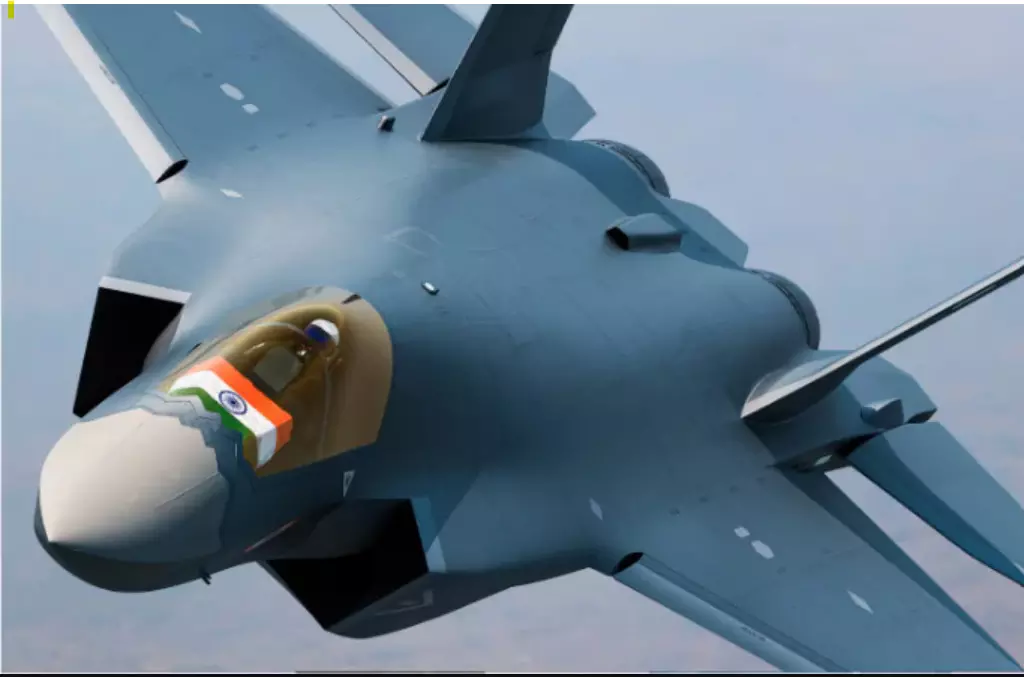A Quantum Leap

The Indian government’s approval for the development of the Advanced Medium Combat Aircraft (AMCA) project marks a significant stride in its quest for defence self-reliance and enhanced regional security. At a time when geopolitical fault lines are deepening and regional rivals are bolstering their own military capabilities, India’s decision to pursue a fifth-generation stealth fighter program speaks volumes about its strategic foresight. The AMCA project, spearheaded by the Aeronautical Development Agency (ADA), envisions the creation of a twin-engine, fifth-generation stealth multirole fighter aircraft. This ambitious program not only represents a technological leap but also underscores India’s resolve to modernise its ageing air force fleet and secure its strategic autonomy. The rationale behind this decision is rooted in a clear-eyed assessment of the regional security landscape. The Indian Air Force (IAF), which currently operates with 31 active squadrons, remains well below the sanctioned strength of 42. This gap becomes all the more concerning when juxtaposed with the rapid modernization of neighbouring air forces. Pakistan’s acquisition of China’s advanced J-10 fighter jets and Beijing’s reported offer to supply J-35 stealth fighters to Islamabad highlight the pressing need for India to maintain a qualitative edge in aerial warfare capabilities.
The recent conflict in May 2025 between India and Pakistan, which witnessed the extensive use of drones and precision-guided munitions, served as a wake-up call. It underscored the evolving nature of modern warfare, where advanced air power, stealth, and electronic warfare capabilities are paramount. In this context, the AMCA program emerges as a timely and necessary response. Fifth-generation stealth fighters like the AMCA are designed to operate with minimal radar signatures, enabling them to penetrate adversary air defences and conduct precision strikes deep within enemy territory. Features such as radar-absorbent materials, internal weapons bays, and advanced avionics systems ensure that these aircraft remain at the cutting edge of technology. The AMCA’s potential integration of artificial intelligence and future-ready systems like directed energy weapons further positions it as a formidable addition to India’s defence arsenal. However, the AMCA is more than just a fighter jet – it is a testament to India’s Atmanirbhar Bharat (self-reliant India) vision. By involving private industry players and micro, small, and medium enterprises (MSMEs) alongside the state-run Hindustan Aeronautics Limited (HAL), the program aims to create a robust indigenous defence manufacturing ecosystem. This not only enhances India’s technological capabilities but also generates employment and fosters innovation across the country. The decision to greenlight the AMCA also sends a powerful message to the international community: India is serious about reducing its reliance on foreign defence imports and is willing to invest in the long-term strategic autonomy that Indigenous capabilities offer. Historically, delays in projects like the Tejas Light Combat Aircraft have raised concerns about India’s defence preparedness. By leveraging the lessons learned from past experiences, the AMCA program has the potential to set a new benchmark for project execution and accountability. Yet, while the approval of the AMCA is a welcome development, it is imperative that the program does not fall prey to the bureaucratic hurdles and delivery delays that have plagued past defence projects. The ambitious timeline of developing initial prototypes by 2028-29 and commencing mass production by 2035 must be adhered to with unwavering commitment. Regular audits, transparent reporting, and effective project management will be crucial to ensure the AMCA program stays on track.
Beyond the domestic implications, the AMCA program holds significant ramifications for the regional security architecture. A capable and modernized Indian Air Force, equipped with fifth-generation stealth fighters, would serve as a credible deterrent against potential adversaries. It would reinforce India’s strategic posture in the Indo-Pacific region and contribute to a more stable balance of power. In the final analysis, the AMCA program represents a quantum leap in India’s defence modernization journey. It encapsulates the country’s aspirations to not only protect its sovereignty but also emerge as a technology-driven, self-reliant power on the global stage. As the project moves from paper to prototype, it carries with it the hopes of a nation determined to chart its own course in an increasingly uncertain world.



